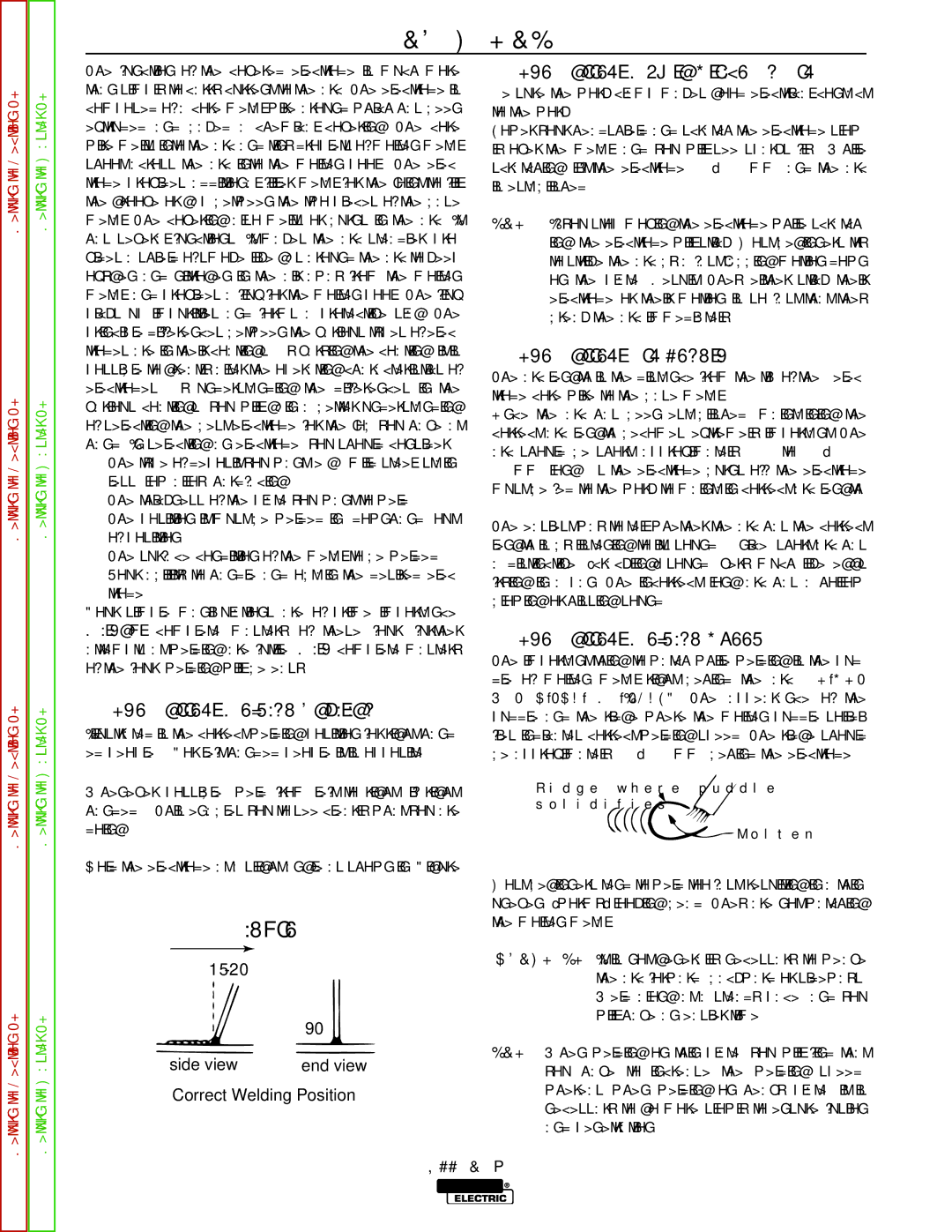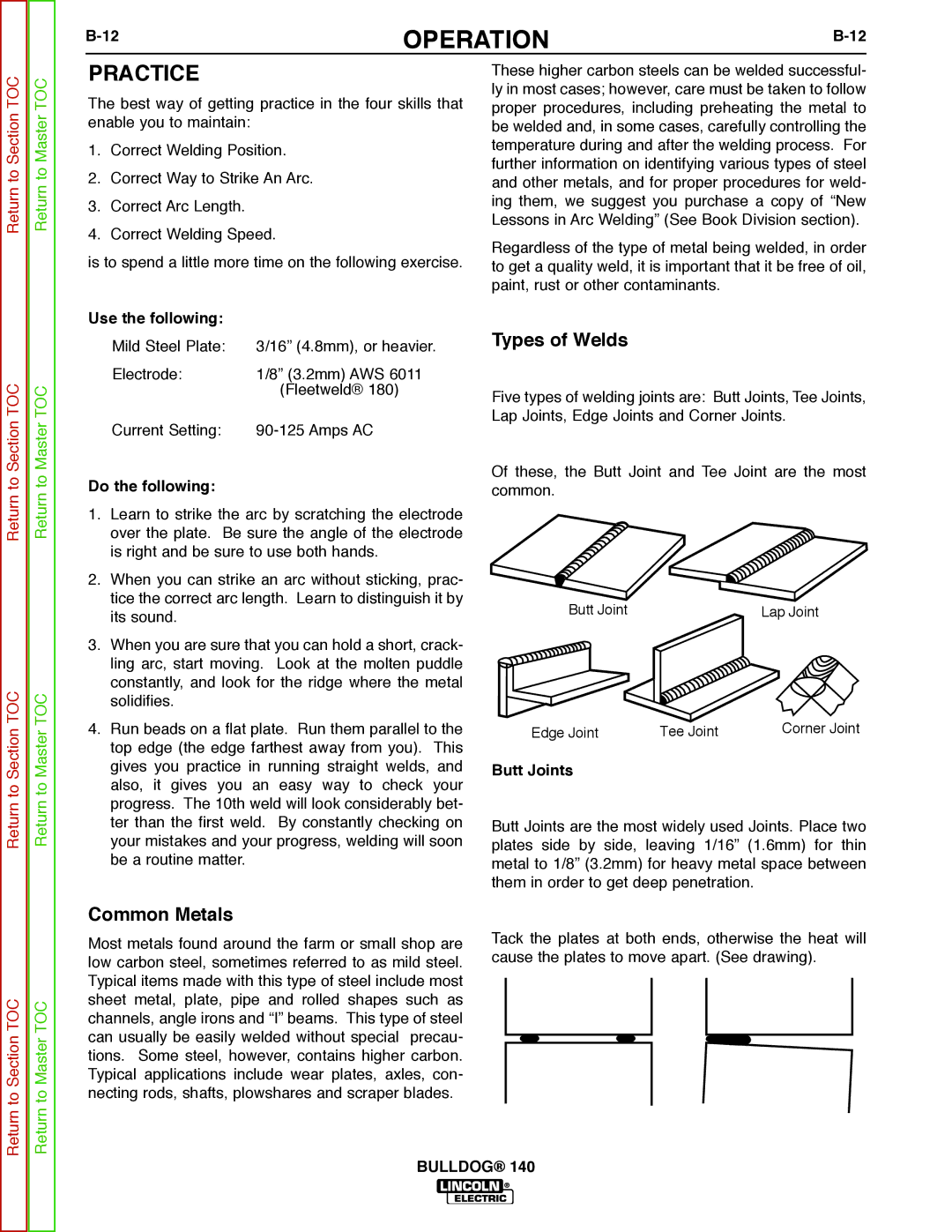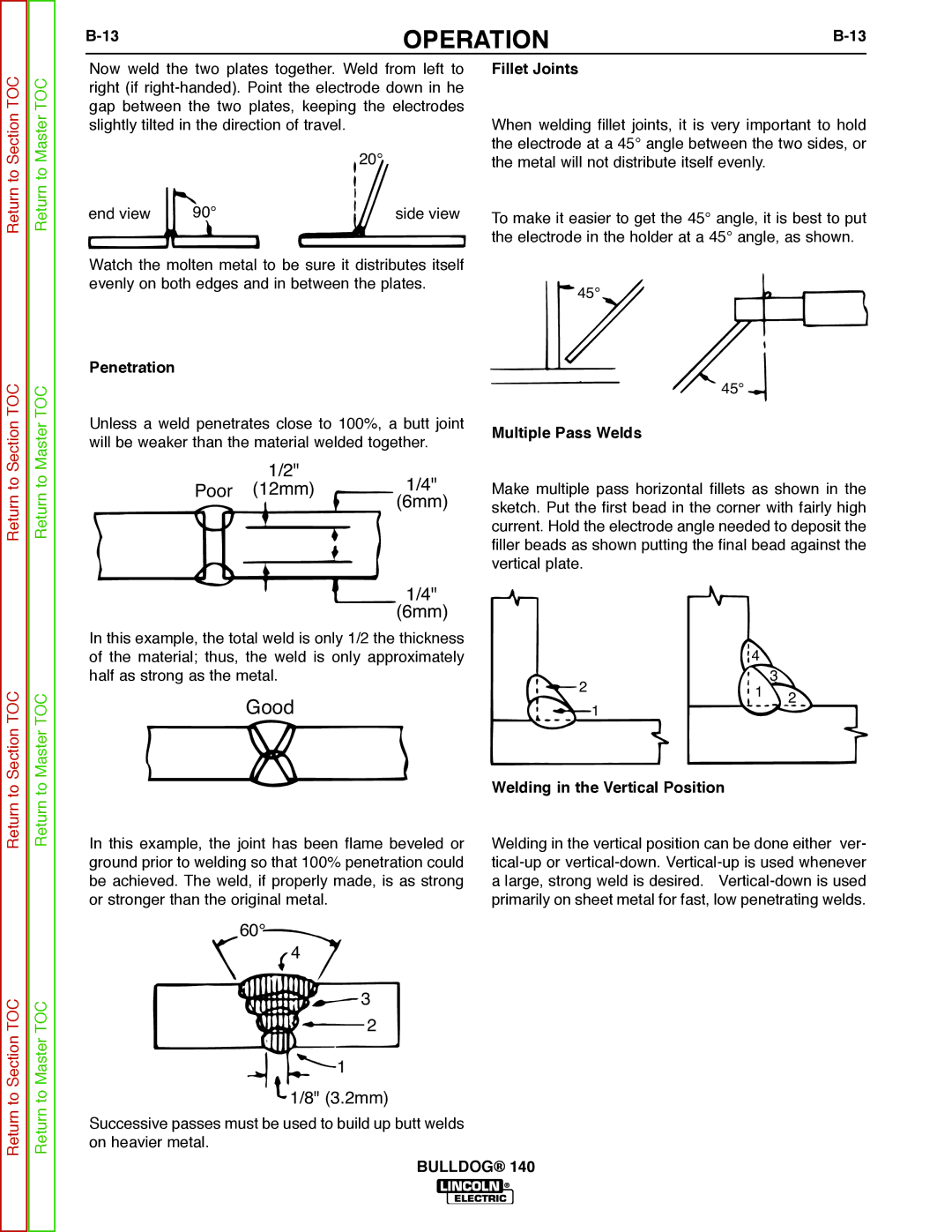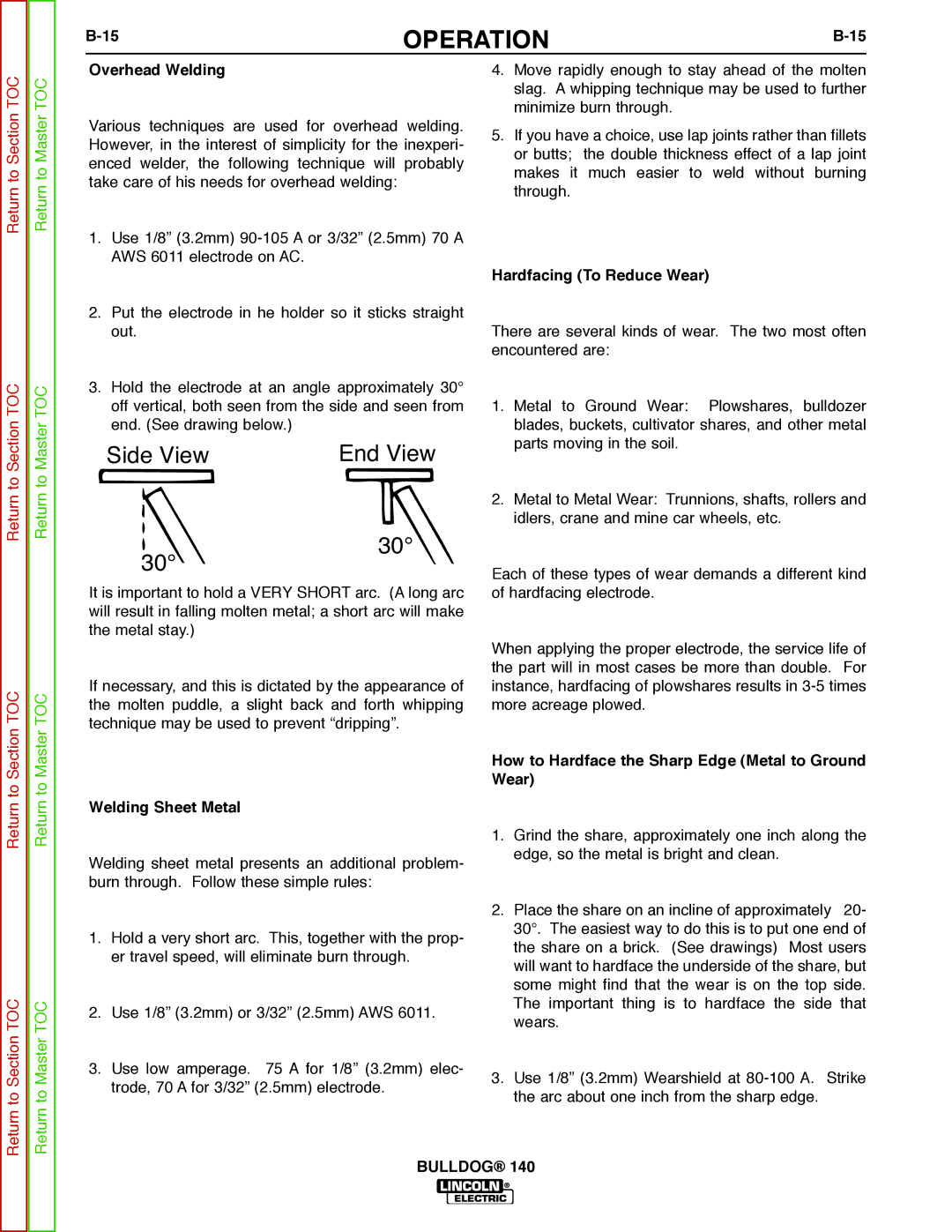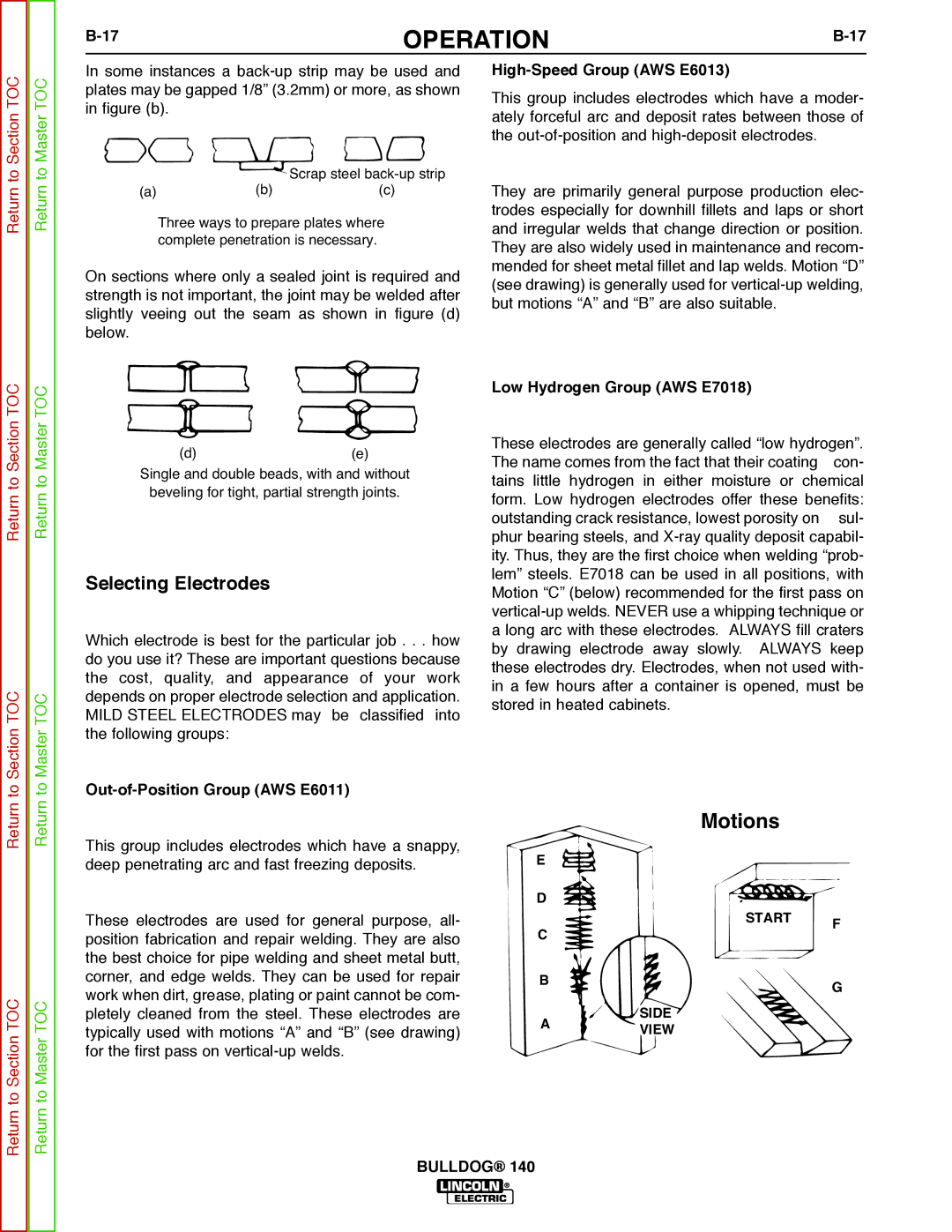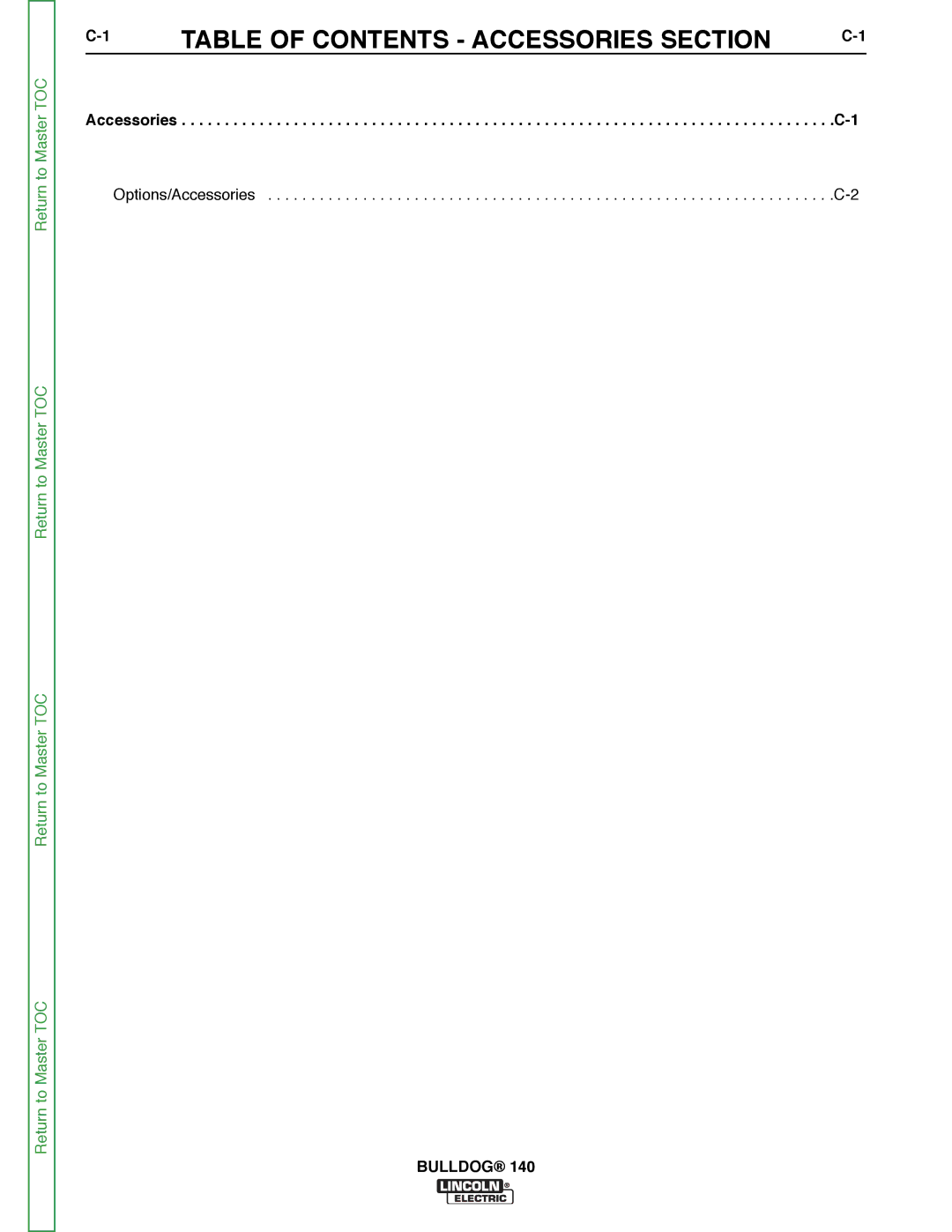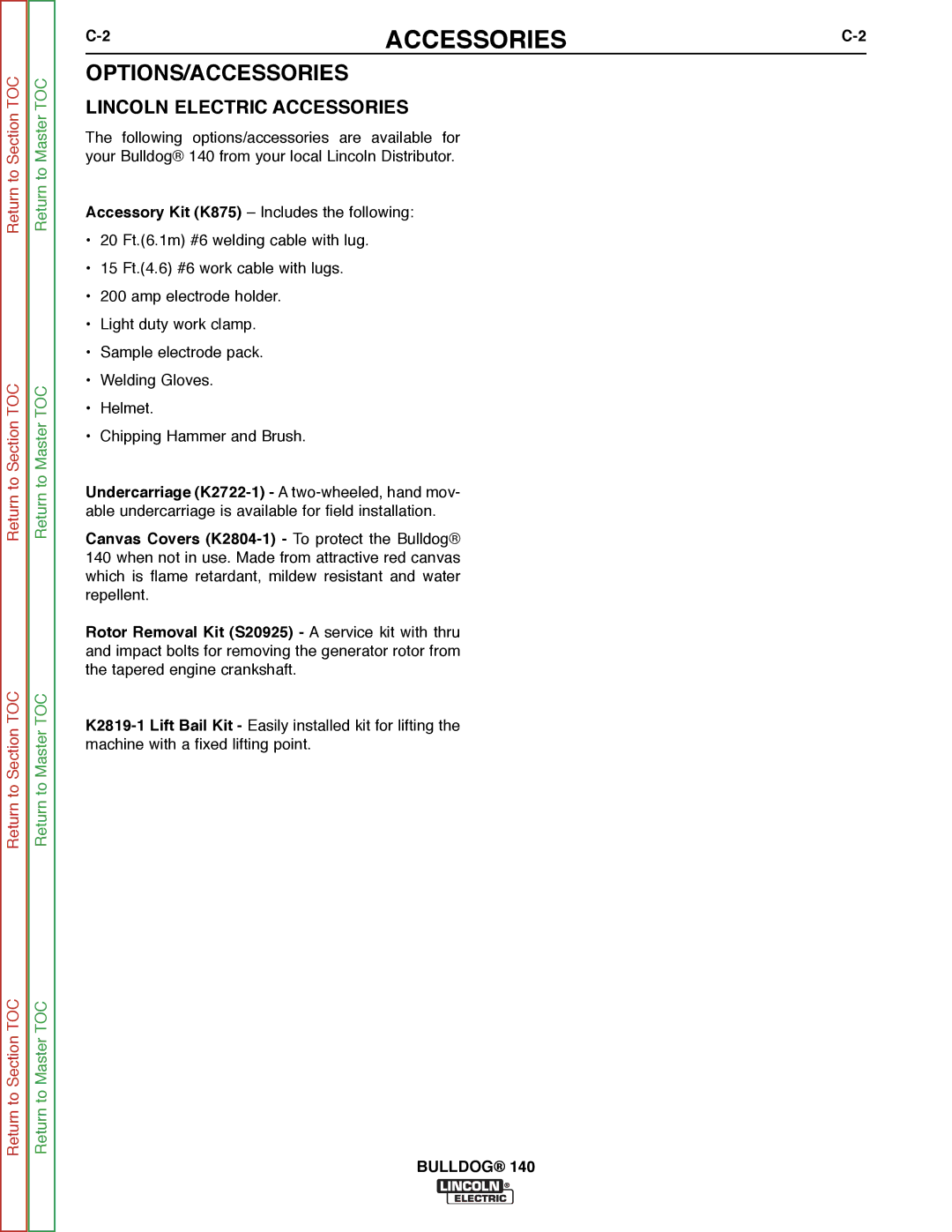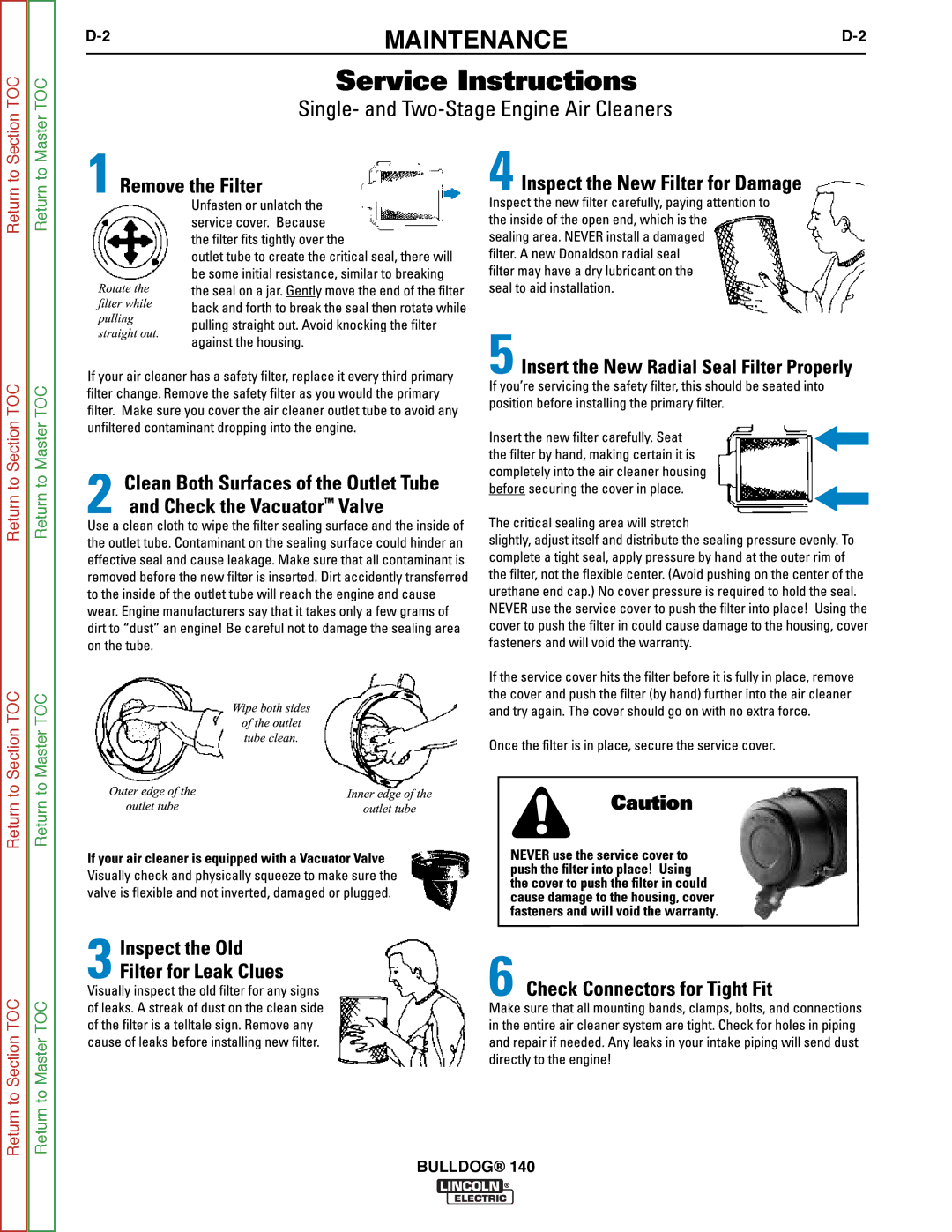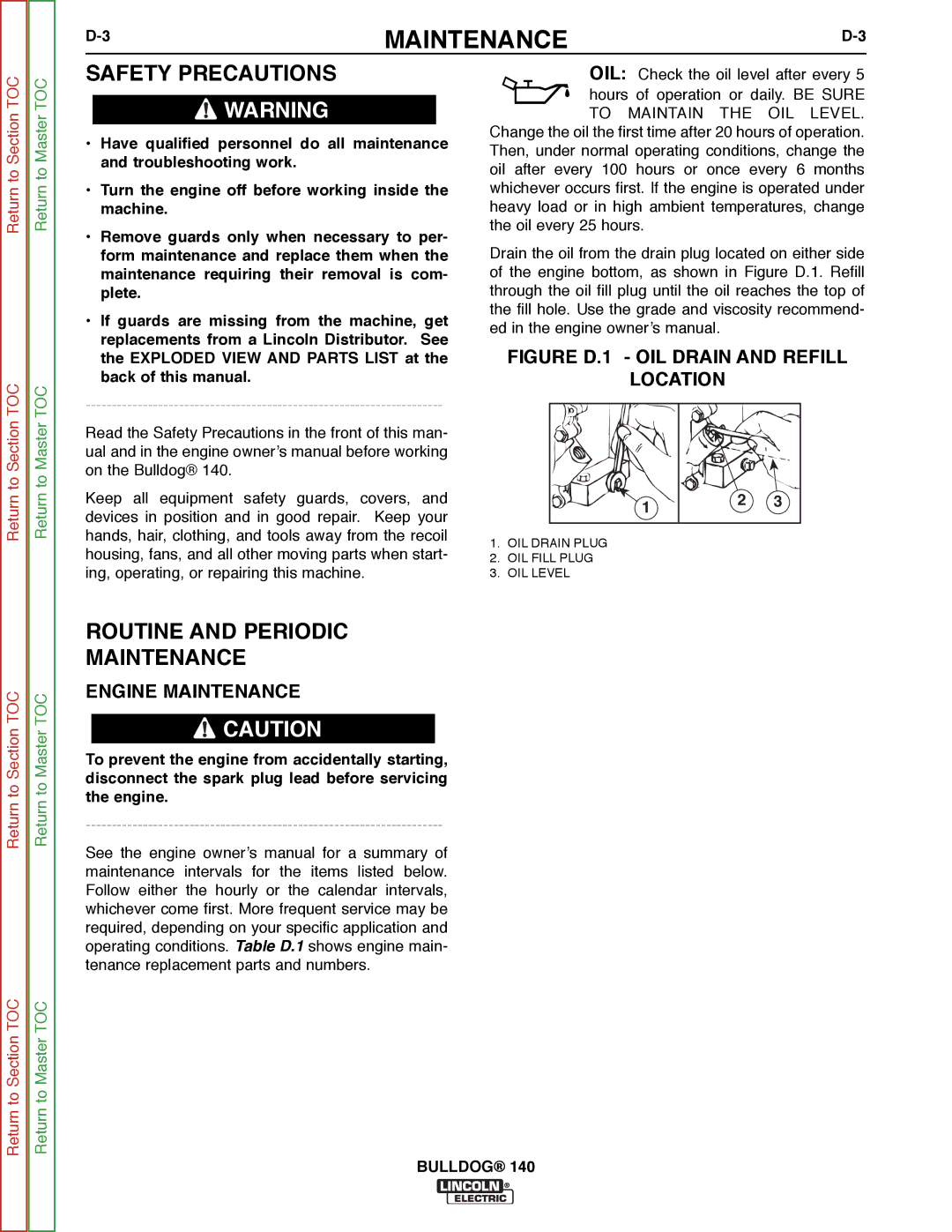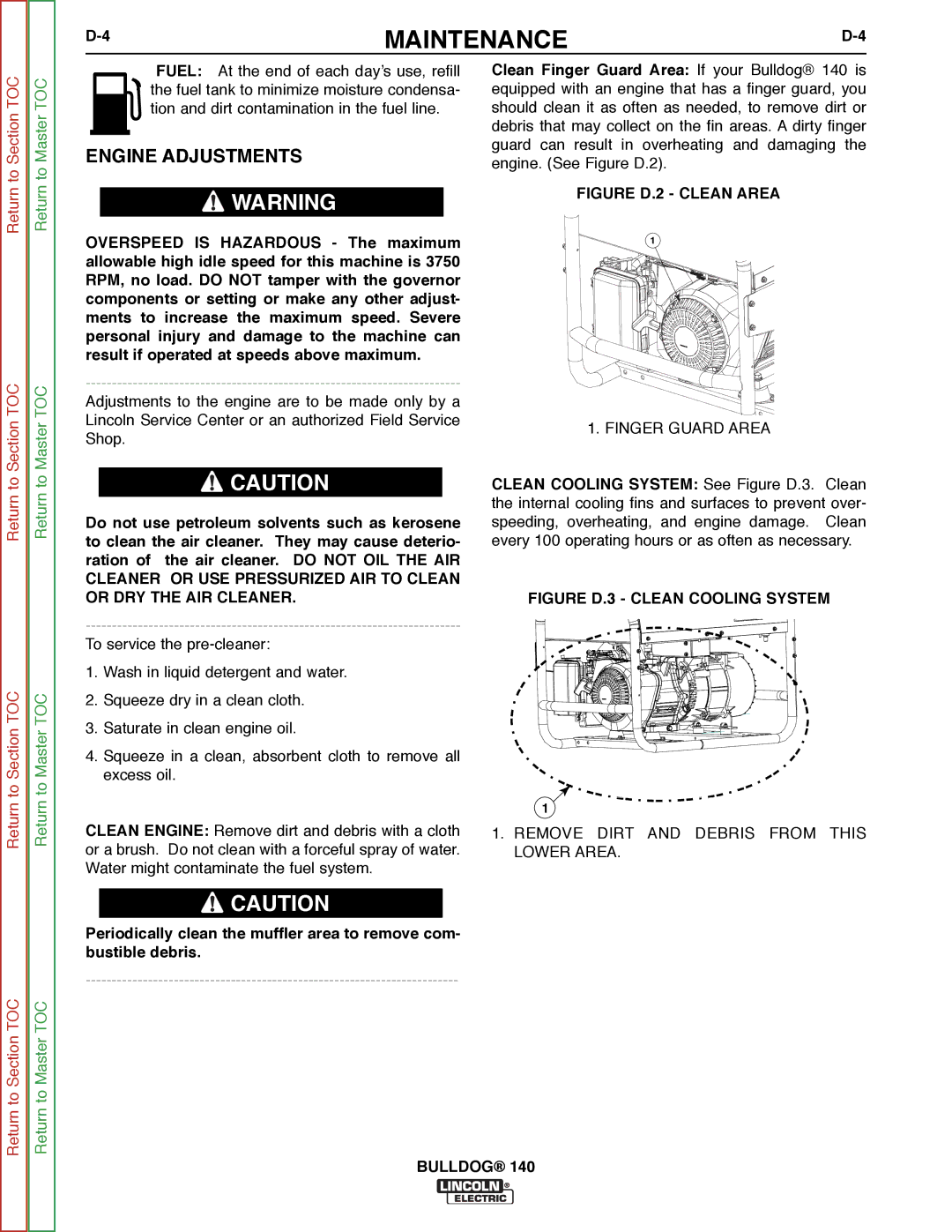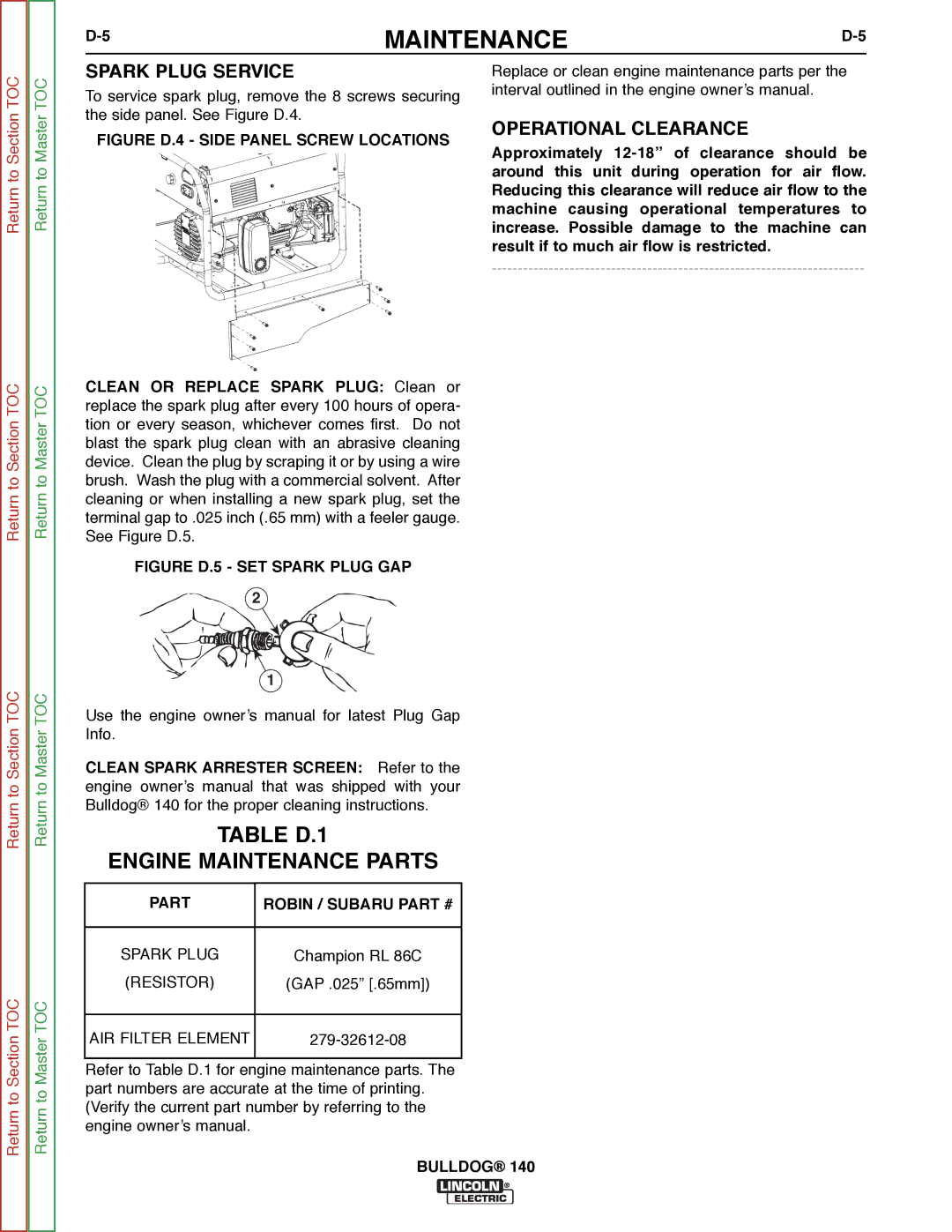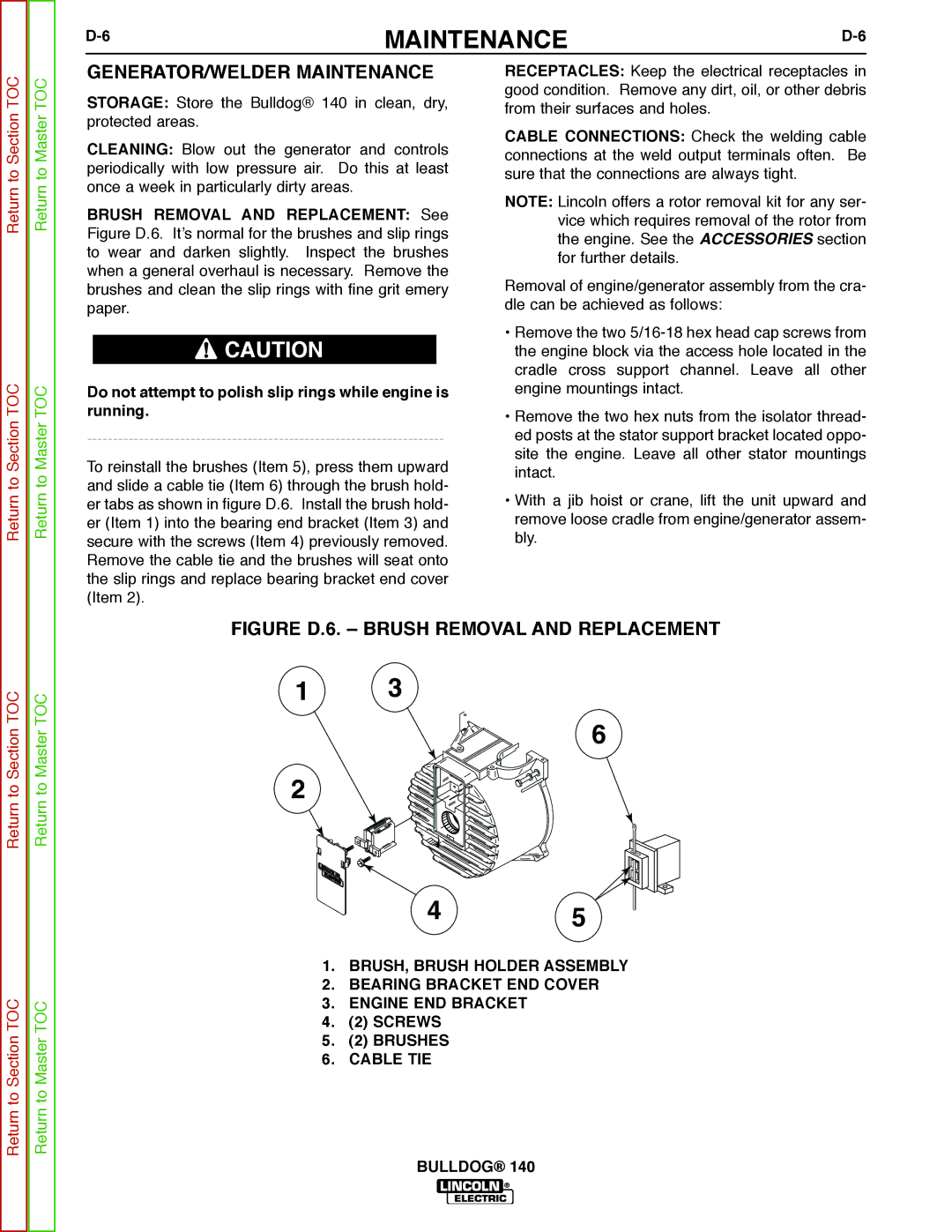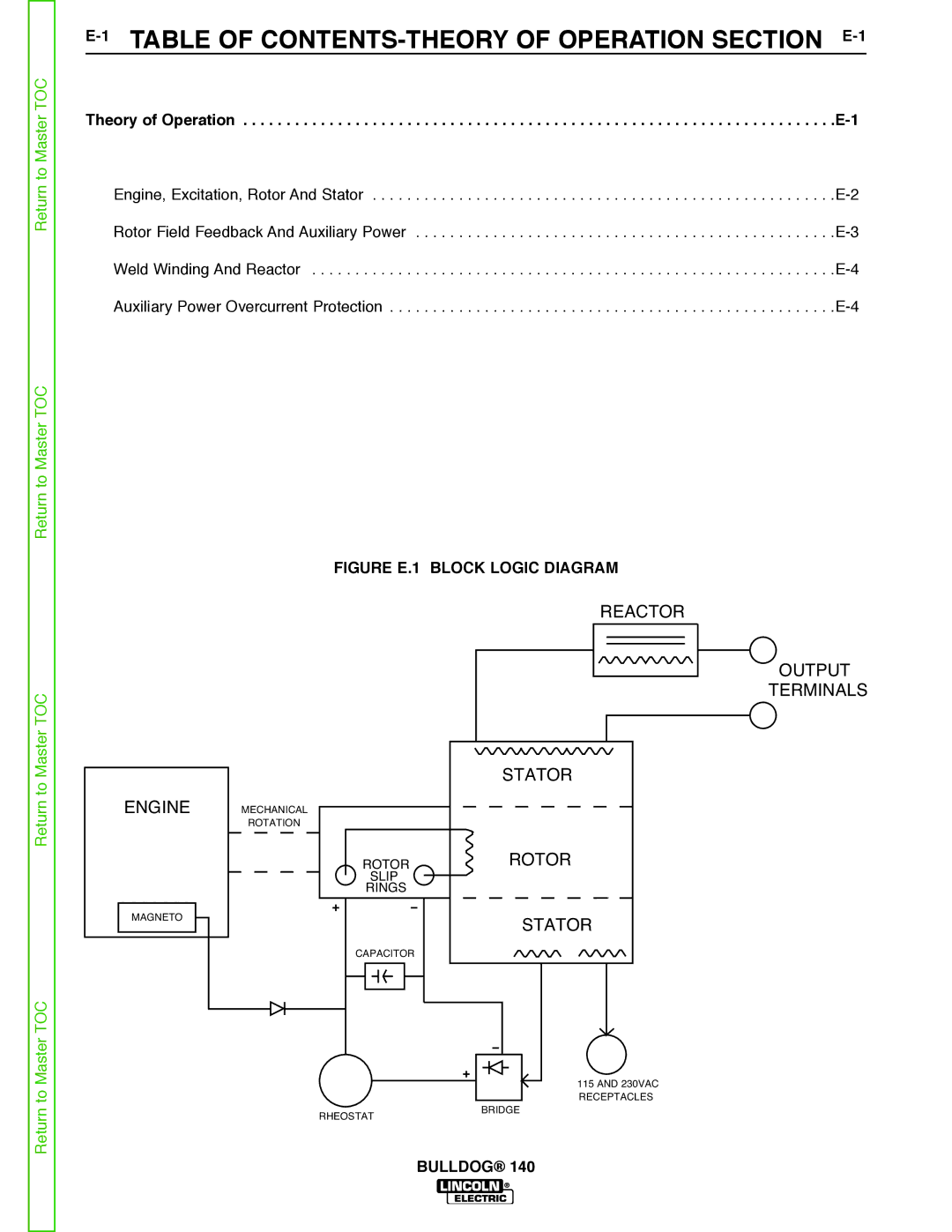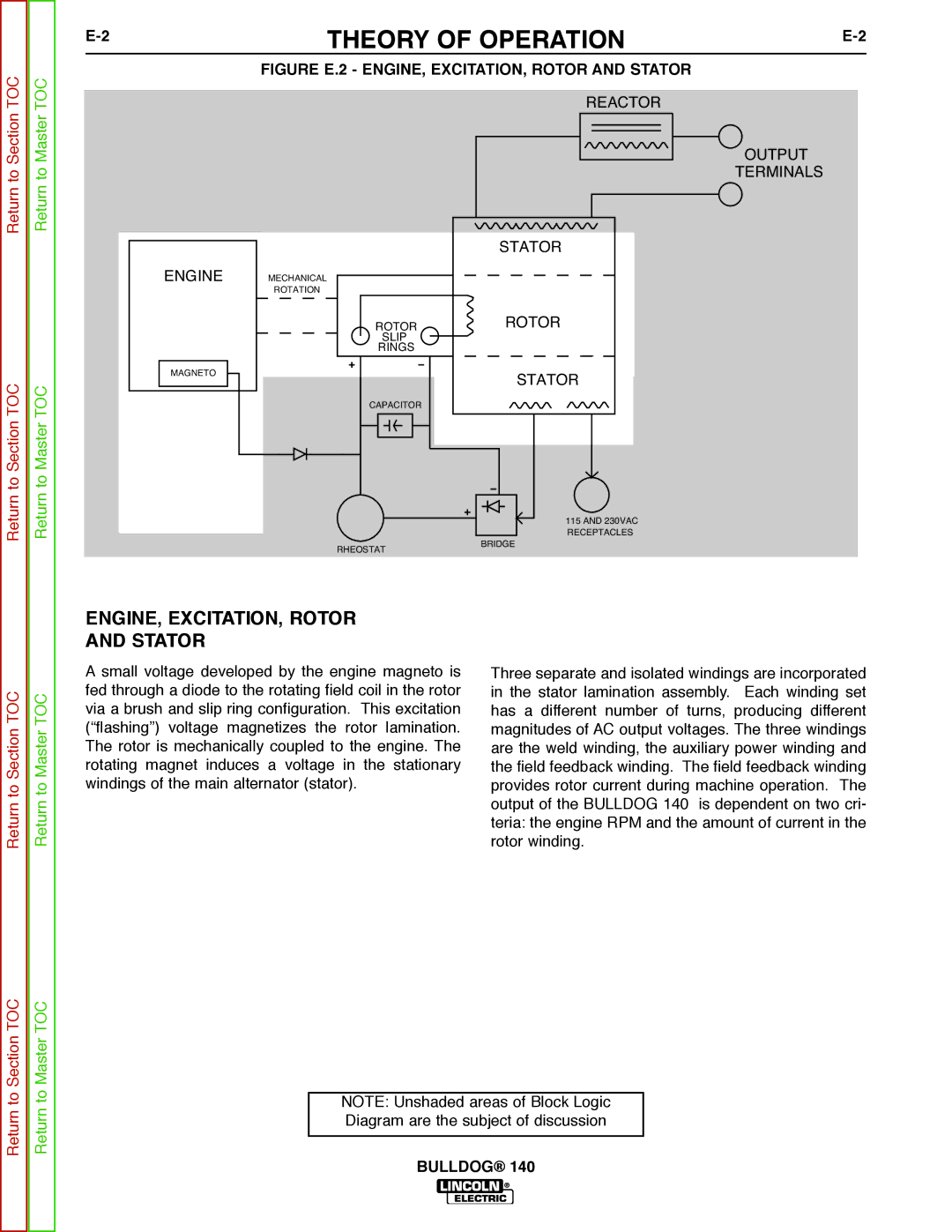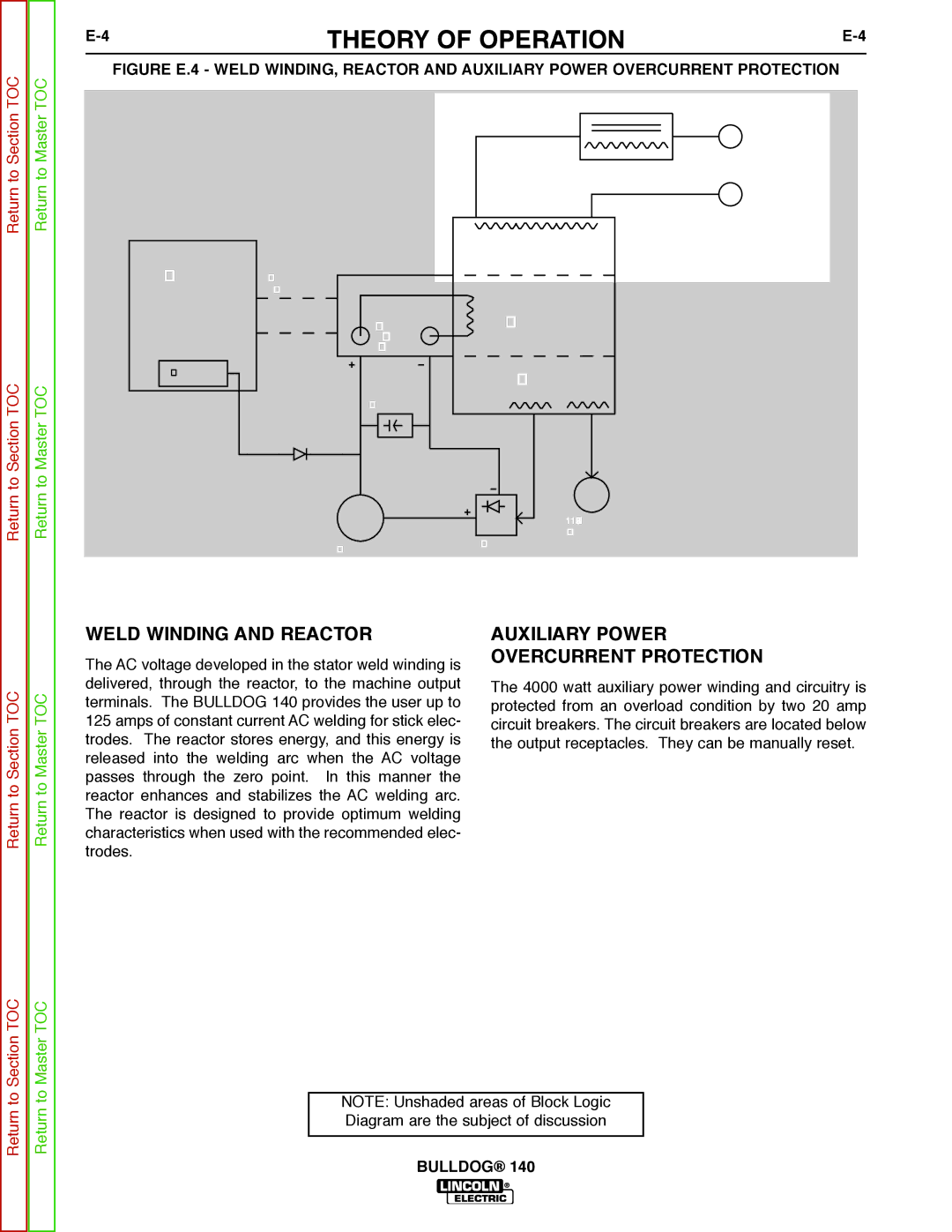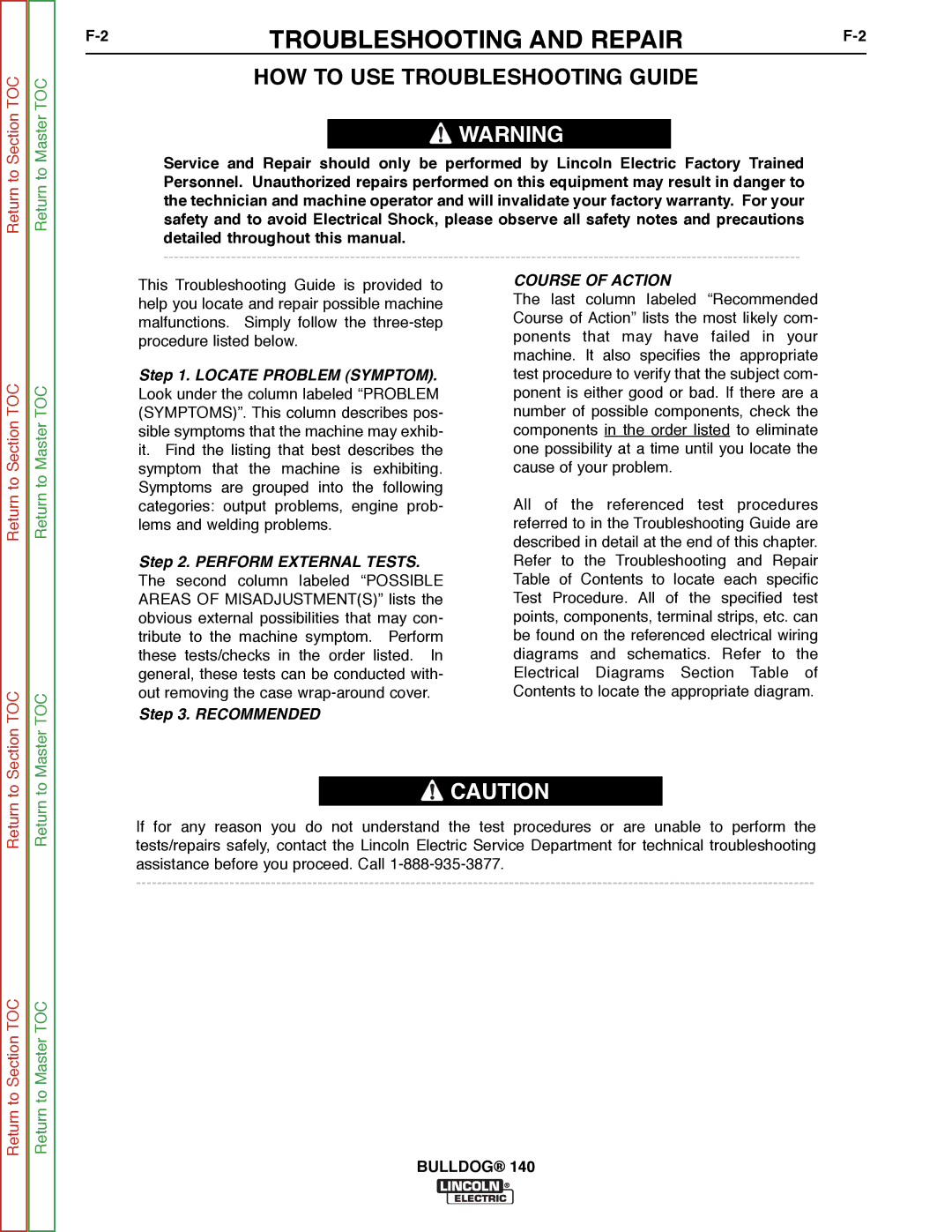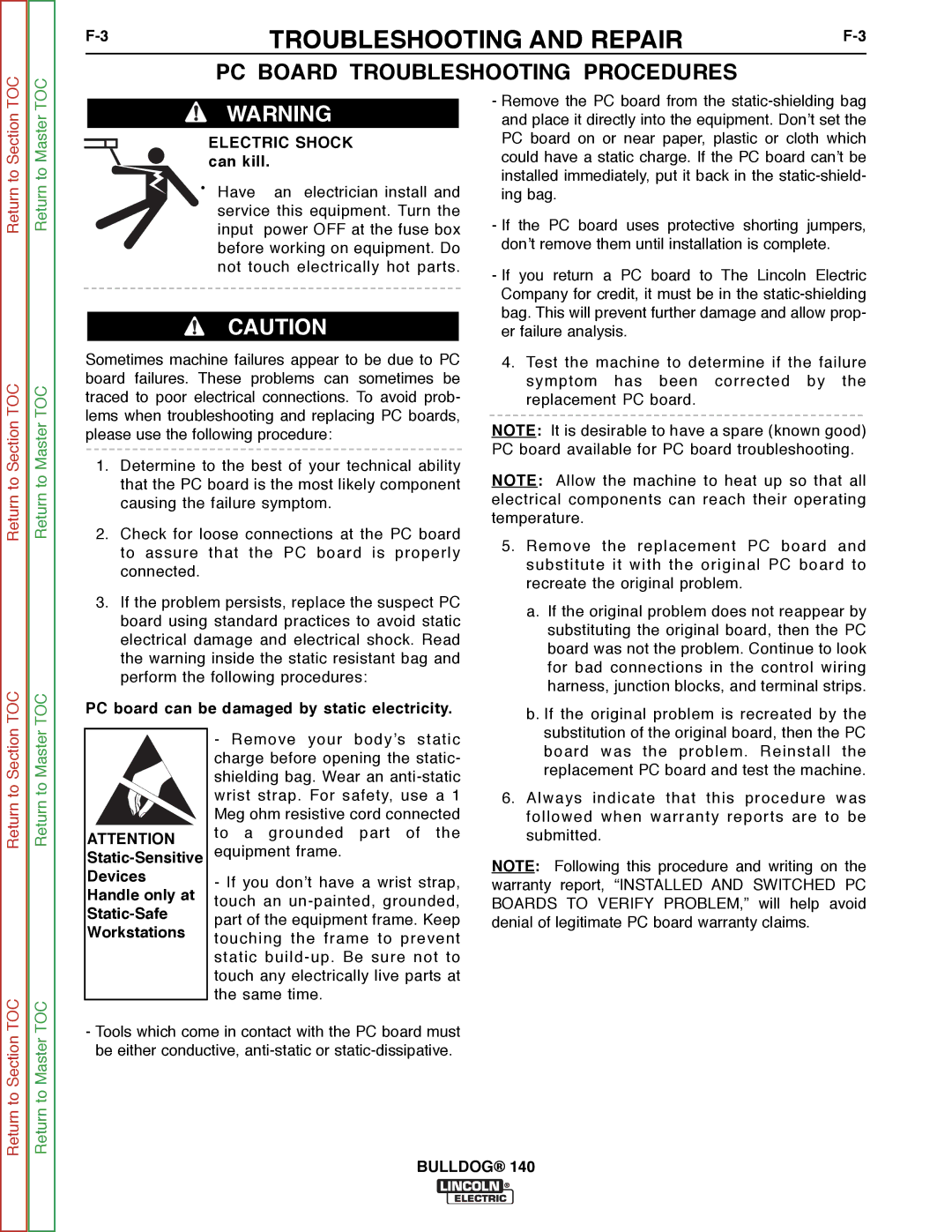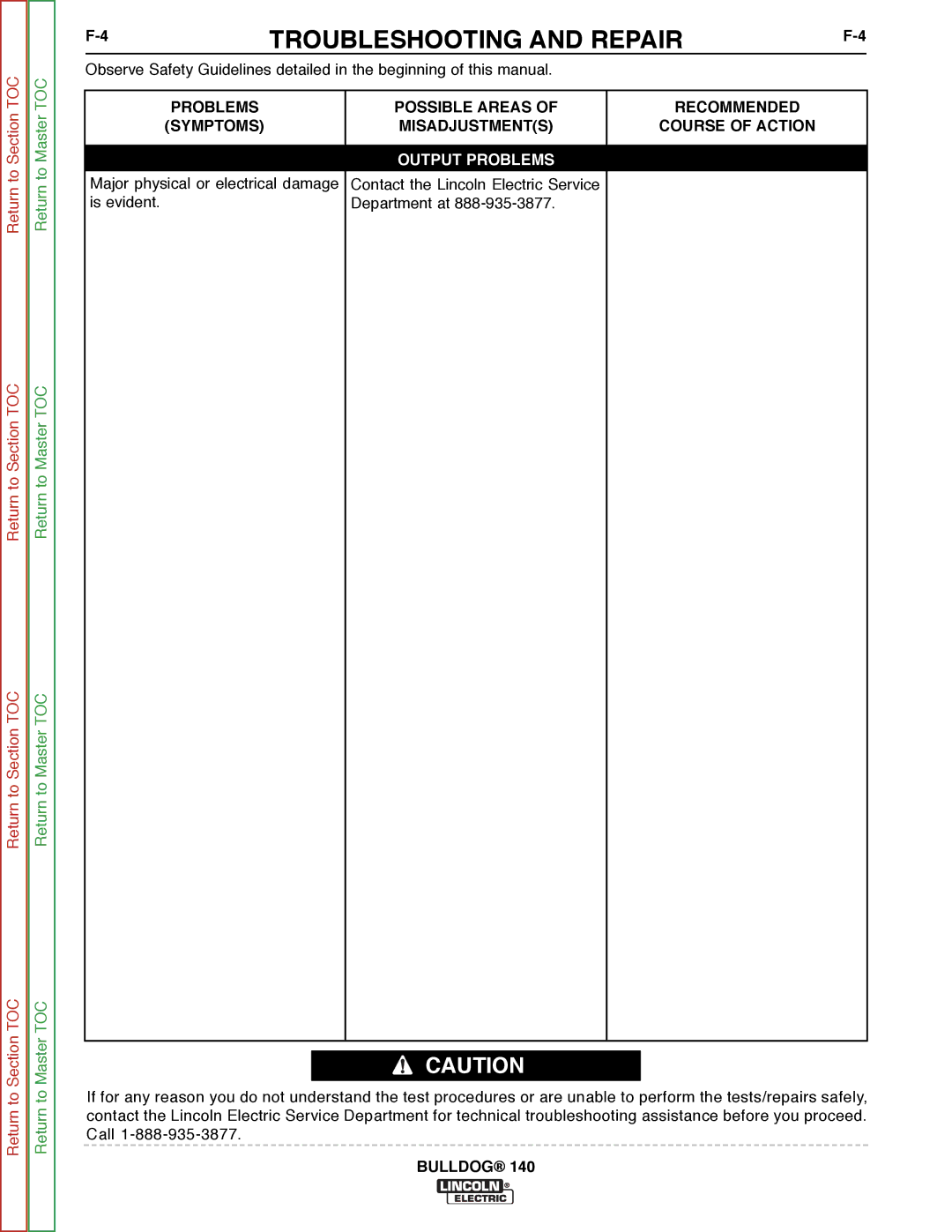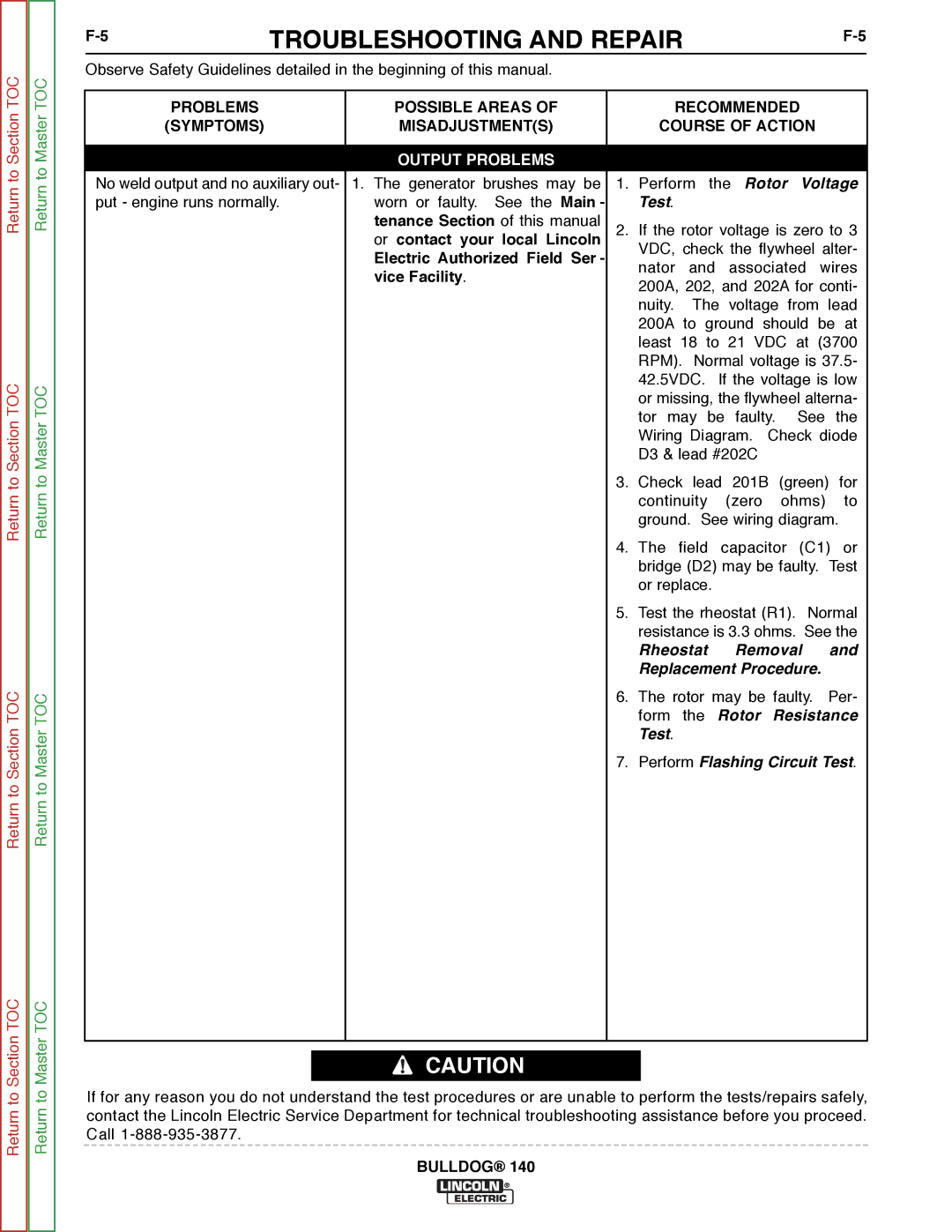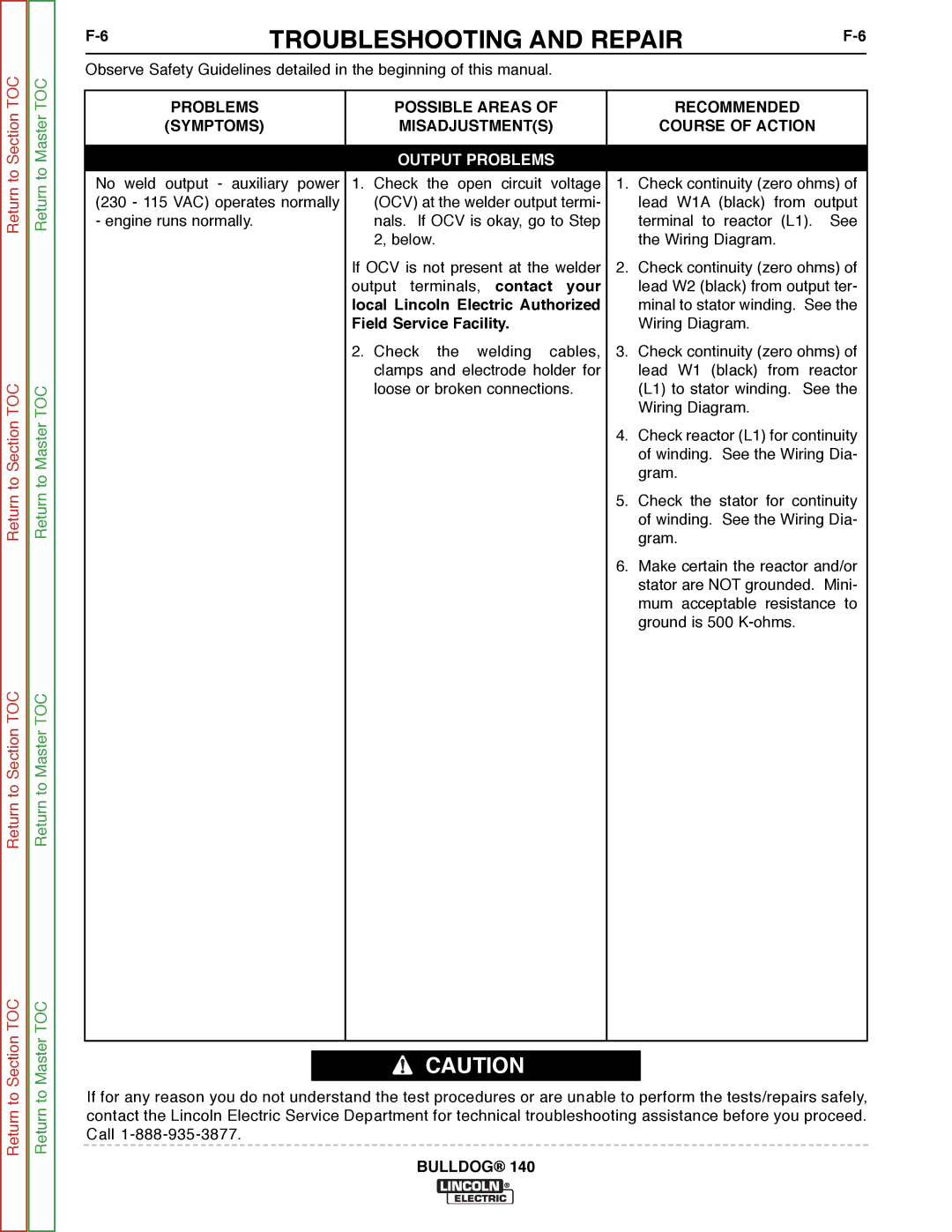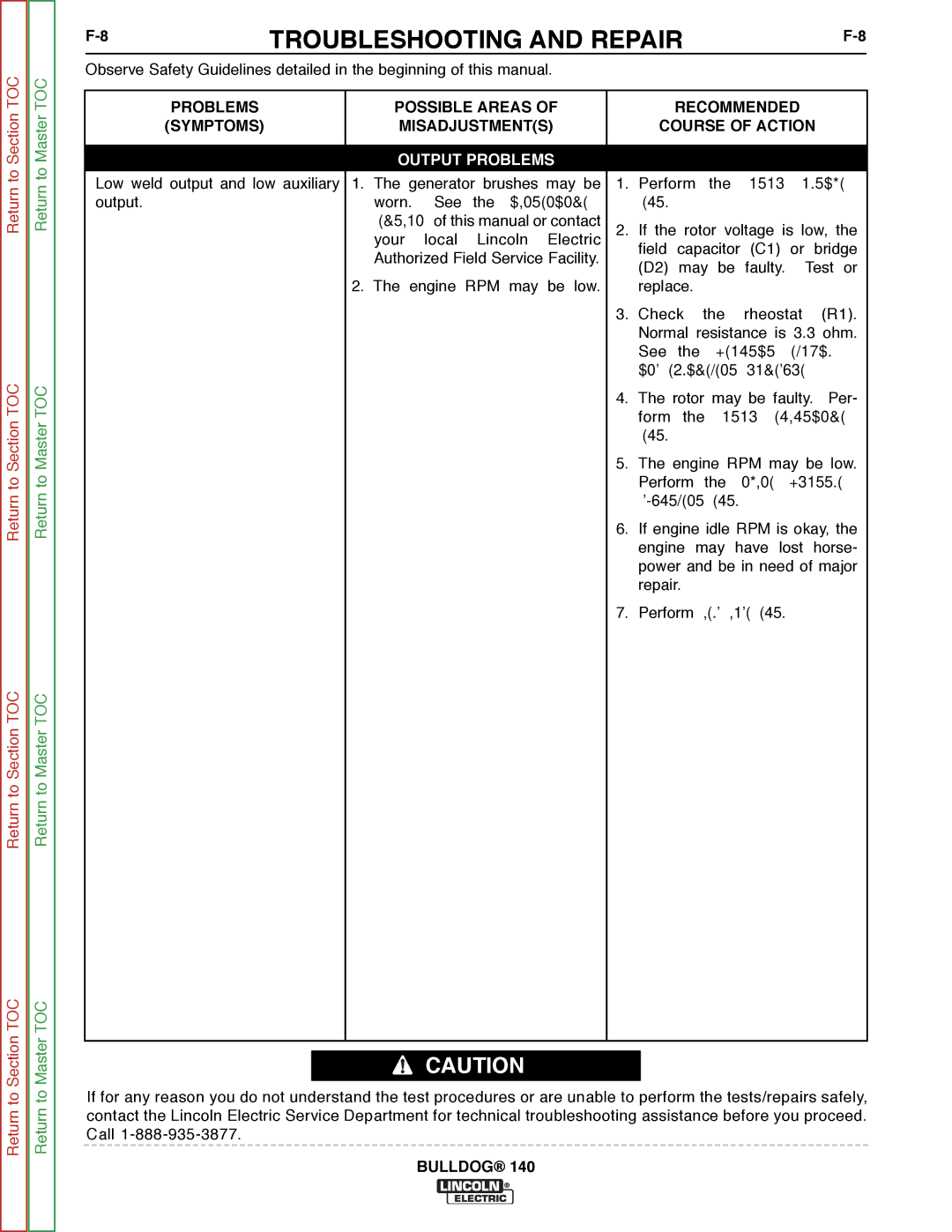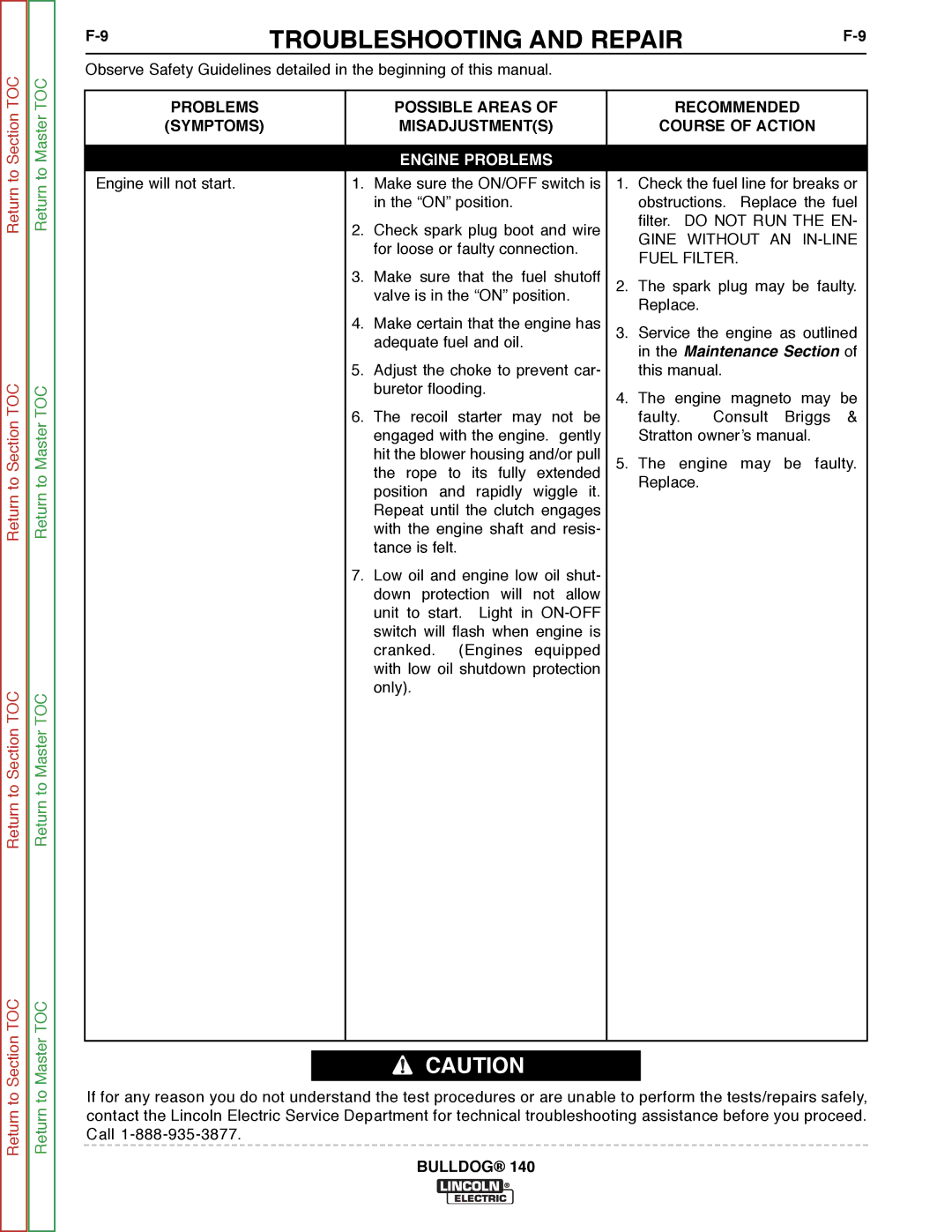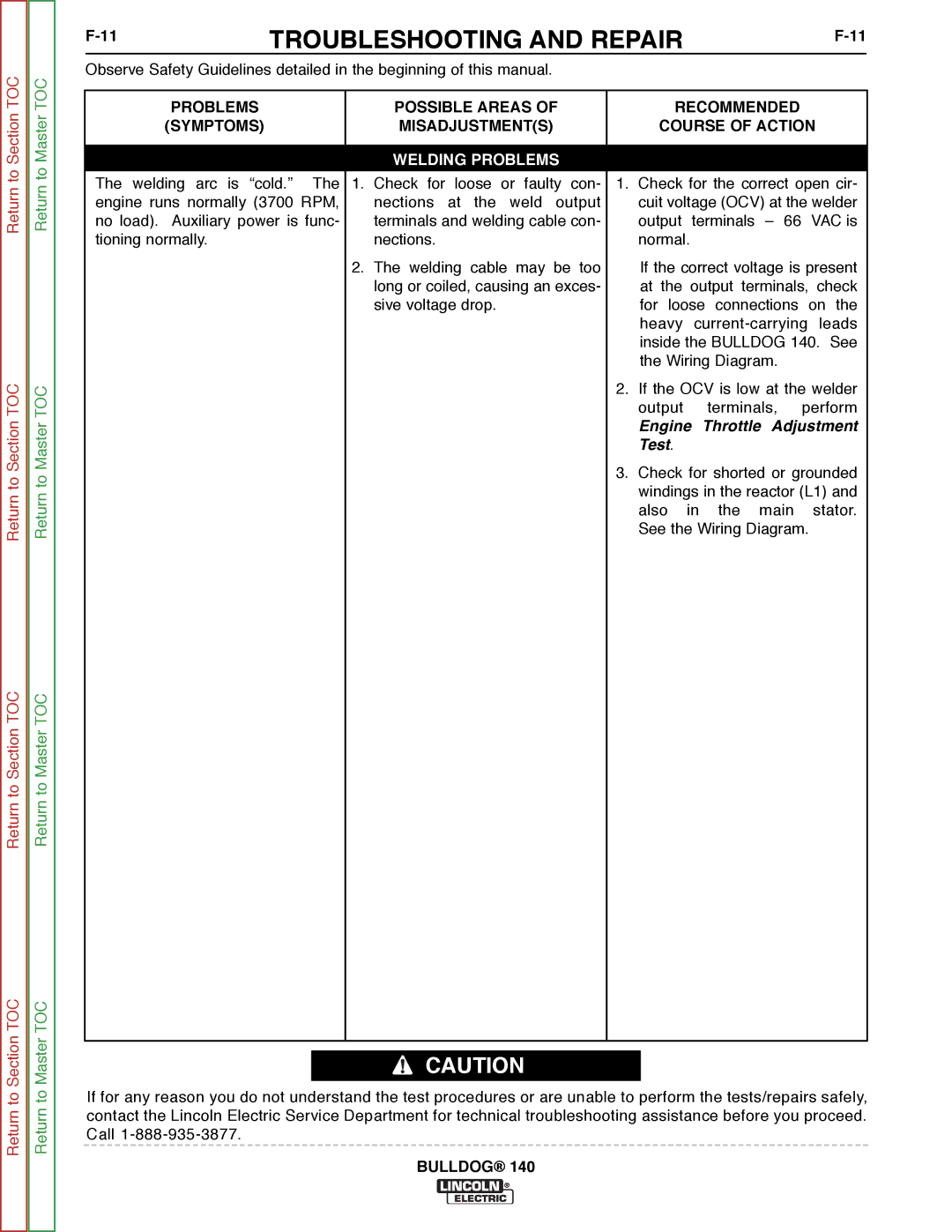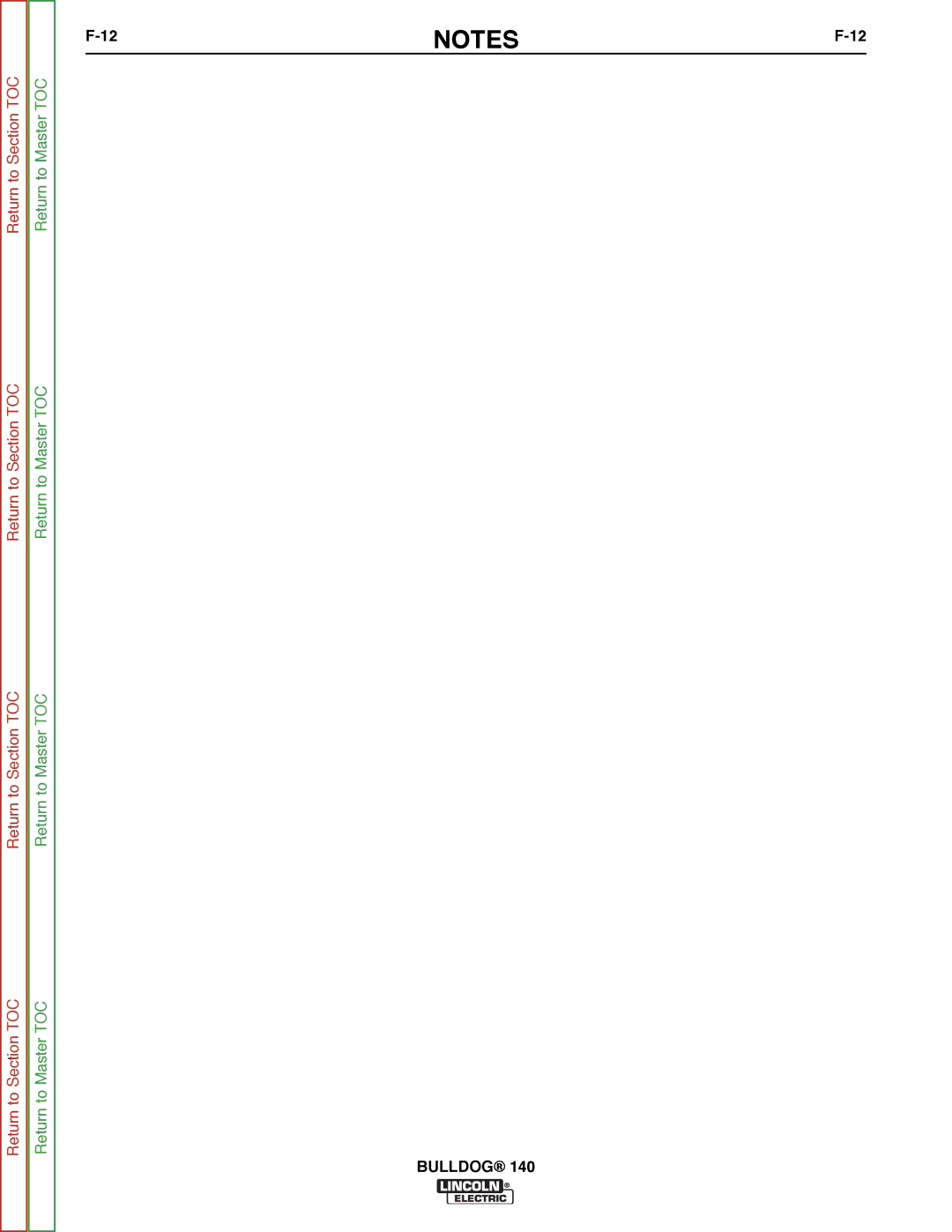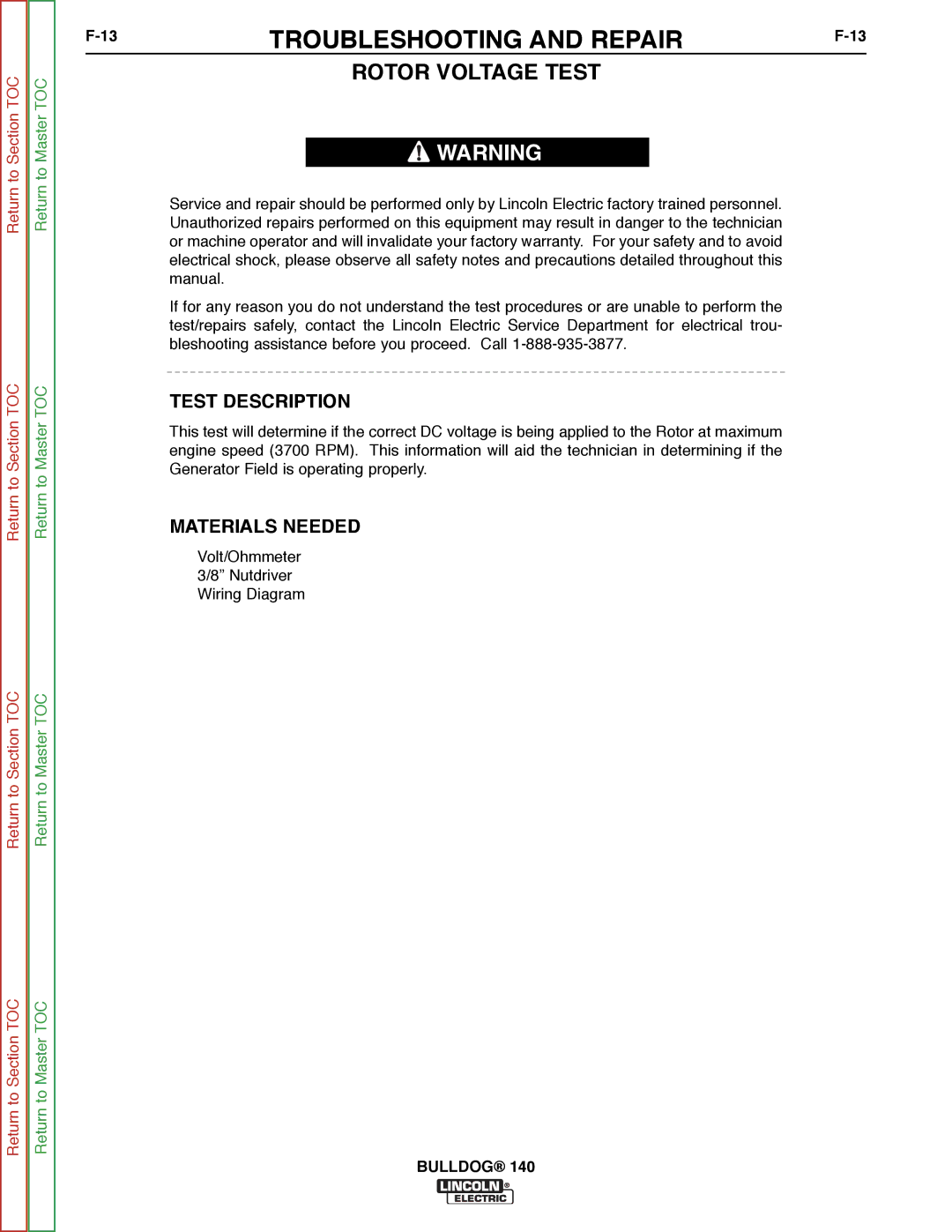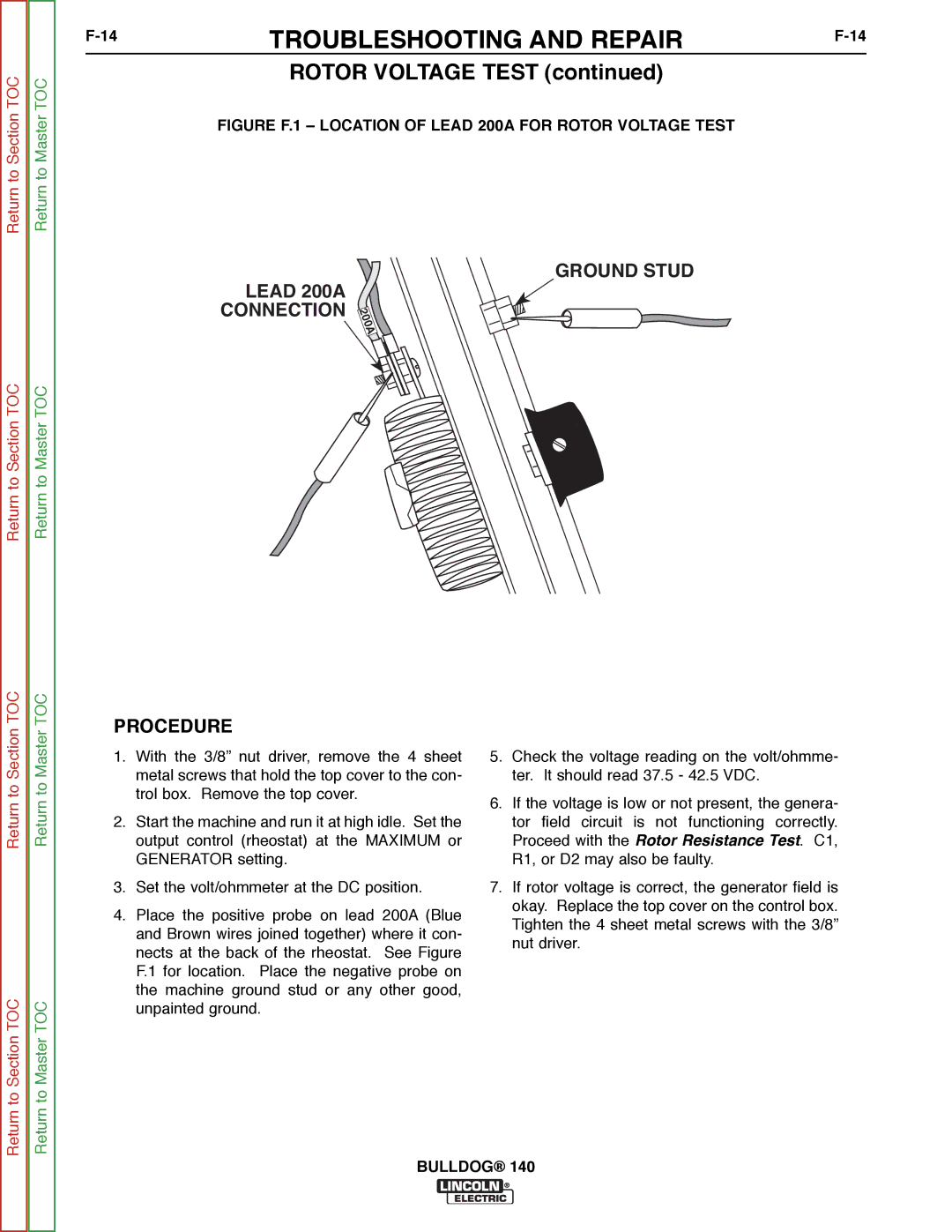
Return to Section TOC
Return to Section TOC
Return to Section TOC
Return to Section TOC
Return to Master TOC
Return to Master TOC
Return to Master TOC
Return to Master TOC
MAINTENANCE |
|
| ||||||||||
|
|
|
|
|
|
|
|
| ||||
|
|
|
|
|
|
|
|
|
| |||
SAFETY PRECAUTIONS |
|
|
|
|
| OIL: Check the oil level after every 5 | ||||||
|
|
|
|
|
|
| hours of operation or daily. BE SURE | |||||
| WARNING |
|
|
|
|
| ||||||
|
|
|
|
|
| TO MAINTAIN THE OIL LEVEL. | ||||||
• Have qualified personnel do all maintenance | Change the oil the first time after 20 hours of operation. | |||||||||||
Then, under normal operating conditions, change the | ||||||||||||
| and troubleshooting work. |
|
| |||||||||
|
|
| oil after every 100 hours or once every 6 months | |||||||||
|
|
|
| |||||||||
• Turn the engine off before working inside the | whichever occurs first. If the engine is operated under | |||||||||||
| machine. |
|
| heavy load or in high ambient temperatures, change | ||||||||
• Remove guards only when necessary to per- | the oil every 25 hours. |
|
|
| ||||||||
|
|
|
|
|
|
|
| |||||
| form maintenance and replace them when the | Drain the oil from the drain plug located on either side | ||||||||||
| maintenance requiring their removal is com- | of the engine bottom, as shown in Figure D.1. Refill | ||||||||||
| plete. |
|
| through the oil fill plug until the oil reaches the top of | ||||||||
• If guards are missing from the machine, get | the fill hole. Use the grade and viscosity recommend- | |||||||||||
ed in the engine owner’s manual. |
|
|
| |||||||||
| replacements from a Lincoln Distributor. See |
|
|
| ||||||||
| FIGURE D.1 - OIL DRAIN AND REFILL | |||||||||||
| the EXPLODED VIEW AND PARTS LIST at the | |||||||||||
| back of this manual. |
|
|
|
|
| LOCATION |
|
|
| ||
|
|
|
|
|
|
|
| |||||
|
|
|
|
|
|
|
| |||||
Read the Safety Precautions in the front of this man- |
|
|
|
|
|
|
|
| ||||
ual and in the engine owner’s manual before working |
|
|
|
|
|
|
|
| ||||
on the Bulldog® 140. |
|
|
|
|
| 1 |
| 2 | 3 |
| ||
Keep all equipment safety guards, covers, and |
|
|
| |||||||||
|
|
|
|
|
|
|
| |||||
devices in position and in good repair. Keep your |
|
|
|
|
|
|
|
| ||||
hands, hair, clothing, and tools away from the recoil | 1. OIL DRAIN PLUG |
|
|
| ||||||||
housing, fans, and all other moving parts when start- |
|
|
| |||||||||
2. OIL FILL PLUG |
|
|
| |||||||||
ing, operating, or repairing this machine. |
|
| 3. OIL LEVEL |
|
|
| ||||||
ROUTINE AND PERIODIC
MAINTENANCE
ENGINE MAINTENANCE
![]() CAUTION
CAUTION
To prevent the engine from accidentally starting, disconnect the spark plug lead before servicing the engine.
See the engine owner’s manual for a summary of maintenance intervals for the items listed below. Follow either the hourly or the calendar intervals, whichever come first. More frequent service may be required, depending on your specific application and operating conditions. Table D.1 shows engine main- tenance replacement parts and numbers.
